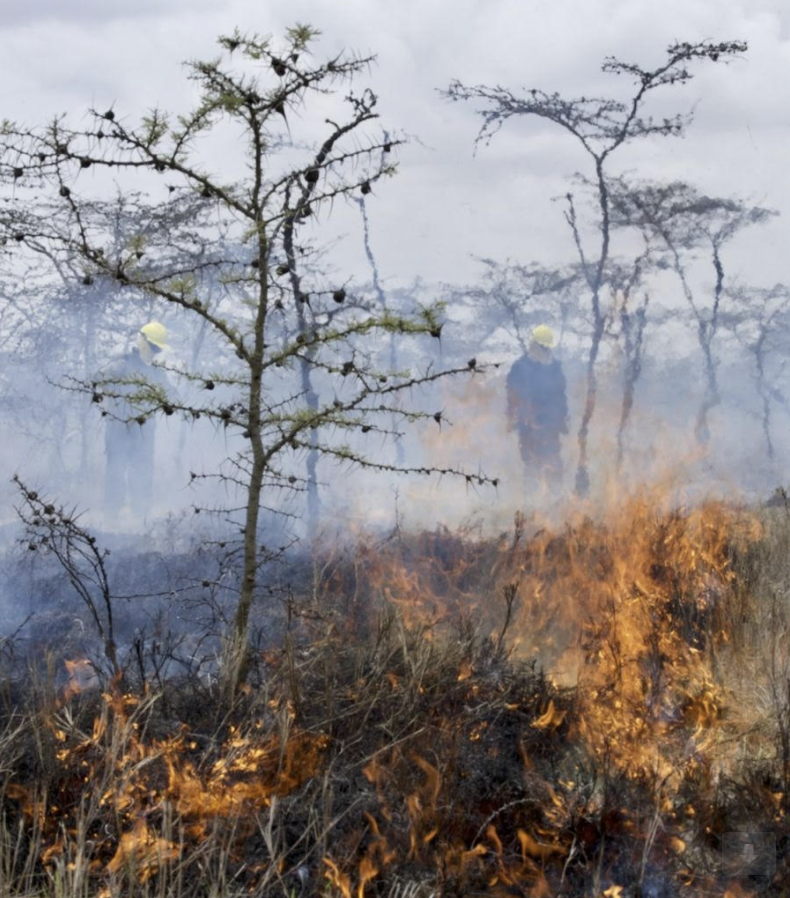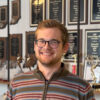This summer, Goshen College will begin a new program in partnership with a Kenyan research station, studying carbon sequestration in soil. Four Goshen College students will team up with four Kenyan students to study grassland conservation and restoration.
The eight-week program involves studying at Merry Lea for four weeks in June and then at the Mpala Research Centre in Kenya for four more in July. The program “seeks to understand the role fire and grazing play in sequestering carbon in grassland soils.”Carbon sequestration — simply put, capturing carbon in soil — has two major benefits: not only does a higher carbon concentration enrich soil, but it also keeps carbon out of the atmosphere, reducing the environmental impact of farming.
While there are many studies on soil quality after burning and after grazing, this program combines both factors, something that has been fairly overlooked in the academic literature. This is not a new topic to Goshen College; a study with this focus is already underway — and has been for years, including at the college’s Merry Lea Environmental Learning Center near Wolf Lake.
“When I arrived at Goshen,” said Ryan Sensenig, professor of biological and ecological science, “I became interested in doing tallgrass prairie restoration here both on campus and at some other sites. We found a place at Merry Lea with Bill Minter’s help to do about a 10-acre prairie reconstruction for the purpose of this grazing project.”
The Tallgrass Prairie Grazing Project is a multi-site study that analyzes the effects that burning and grazing have on each other and on soil quality. One of those sites is the Goodrich Prairie at Merry Lea that Sensenig mentioned, where the students will be staying for this program. The other is near Goshen at the Little Bluestem Farm, where Sensenig lives.
“[My wife and I] bought a farm here in Goshen,” Sensenig said, “and I decided to set that up as an experimental replicate of the Goodrich plots. Now, we have two different sites, and then the Kenya collaboration…would be the third site.”
The Kenya Long-term Exclosure Experiment (KLEE) at the Mpala Research Centre is the grassland to be studied in this project. Sensenig has taken students to this site before; most recently, a group of five students traveled to the KLEE site earlier this year with Sensenig to study the effects of controlled burning.
However, this summer study would take the preexisting data and build upon it significantly. Little soil data has been collected from the KLEE site, and this summer would potentially allow for a much more extensive picture of the effects of burning and grazing soil.
The team has applied for a National Science Foundation grant, and Sensenig hopes that if Goshen receives the grant, the data will be much more extensive.
“If we get the grant,” Sensenig said, “we’ll be able to test the effect of fire and grazing completely replicated in three different sites on the effect of that [fire and grazing] microbial biomass, root growth and pyrogenic carbon in ways that I think are fairly new, fairly novel. That is something we haven’t done before in our labs at all.”
“The only thing we’ve done so far is measure total organic matter,” he continued. “We haven’t measured below-ground root growth, and we surely haven’t measured PyC, or pyrogenic carbon.”
One of the students traveling to Kenya, junior Gonzalo Barahona Hernandez, is excited to incorporate this new data into his current work. As part of the Tallgrass Prairie Grazing Project, Barahona Hernandez is attempting to find the best way to measure phosphorous in soil, and adding a new site will allow him to refine his data.
“The program has the potential to measure phosphorus, but it hasn’t been done yet,” Barahona Hernandez said. “Incorporating phosphorus data from two different places, Indiana and Kenya, will help a lot.”
The other students will each have a personal “mini-research project” that they will be working on in tandem with the overarching carbon sequestration study. For some, such as Barahona Hernandez, this will be central to their senior theses. Alongside Barahona Hernandez, Goshen students Skylar Antonides, Simon Hertzler Gascho and Alexa Kennel will be traveling to Kenya after the Merry Lea portion of the project. Meanwhile, fellow GC students Emily Hershberger and Andrew Hoang will be working on the project at Merry Lea all summer.
Sensenig hopes that the impact of this study will stretch beyond simply discovering new information. He describes the study as “offering some management and guidance to managers and landowners,” working towards more sustainable land management.
“We think [this will create] novel contributions in the literature,” Sensenig said. “We think Goshen can actually contribute some meaningful [data].”
But the program is deeper than the data.
“One of the things that we see in a world that is connected by climate change is that communities across the planet are affecting climate change differently and experiencing climate change differently,” Sensenig said. “So this seems like an opportunity to put students in their early career as scientists who are trying to decide: What questions do I care about? Who do I care about this with? Who do I collaborate with?”
Sensenig’s eyes lit up as he talked about the personal impact of the study. “That kind of cross- cultural, historical ecology, complexity of the situation, I think will be really eye-opening to both communities,” he said, referring to the Kenyan and the Goshen students.
“And then, I just hope they become colleagues for life,” he said. “Maybe we can keep these international connections strong.”
Barahona Hernandez agrees.
“I’m excited to be able to meet different researchers or students from all around the world to hear about all the different things they’re studying or their different views,” he said, “because everyone has a different story behind why they’re at Mpala or what they’re studying.”
Barahona Hernandez went on to say that the research center will “be a welcoming space, because everyone there is trying to help the environment.”
Sensenig said, “It’s so much more than the sciences, It’s giving students an appreciation for the complexity of our story. Our human story. That is what I hope that juxtaposition does.”




